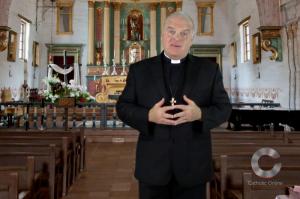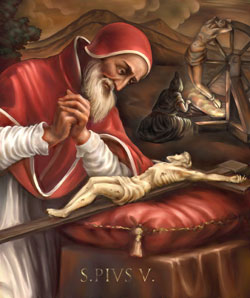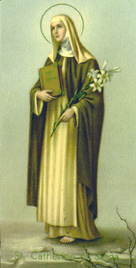We ask you, urgently: don't scroll past this
Dear readers, Catholic Online was de-platformed by Shopify for our pro-life beliefs. They shut down our Catholic Online, Catholic Online School, Prayer Candles, and Catholic Online Learning Resources essential faith tools serving over 1.4 million students and millions of families worldwide. Our founders, now in their 70's, just gave their entire life savings to protect this mission. But fewer than 2% of readers donate. If everyone gave just $5, the cost of a coffee, we could rebuild stronger and keep Catholic education free for all. Stand with us in faith. Thank you.Help Now >
Grandpa, is that you? Scientists find oldest human ancestor lived just after dinosaurs
FREE Catholic Classes
So apparently, according to science, your greatest grandfather was a shrew. Or something much like a shrew. Scientists say new research shows that not long after a great cosmic collision with an asteroid, which killed the dinosaurs, mammals swiftly became the new, dominant species on Earth.
Highlights
Catholic Online (https://www.catholic.org)
2/8/2013 (1 decade ago)
Published in Technology
Keywords: human ancestor, evolution, dinosaurs, extinction, mammal, creation, impact, iridium, shrew
LOS ANGELES, CA (Catholic Online) - Dual studies, taken together, have provided the dramatic new conclusion that is a bit unsurprising for scientists, who have always suspected that an asteroid finished off the dinosaurs and mammals soon took over. What has scientists abuzz is the confirmation of the evidence which supports the theory.
Both stories are being reported in the current issue of the journal Science.
A little over 65 million years ago, scientists now know, a great asteroid, about six miles in diameter, struck the earth near the coast of the Yucatan peninsula. This has been known since the late 1970s, when geologists seeking offshore oil deposits for drilling, found evidence of a corresponding impact crater about 110 miles in diameter.
Geologists found layers of shocked quartz, tektites, which are small glassy stones created only during meteorite impacts, and a gravitational anomaly consistent with such an impact. The impact also coated the Earth with a layer of iridium-rich dust which can be observed at sites around the globe and dates back to the time of the impact. Iridium is rare on Earth, but asteroids are rich with the material, so it serves as a good indicator of the impact.
Paleontologists think the dinosaurs were already having a hard time surviving, since the Earth's climate was changing and dinosaurs were not adapting well. Once the asteroid hit the Earth, it threw so much dust into the atmosphere that it created an artificial planet-wide winter that lasted for years.
The cold temperatures doomed the dinosaurs, who relied on warmth from the sun for body heat as well as to grow vegetation on which smaller, prey-dinosaurs ate.
With the weather so cold, the dinosaurs went extinct almost immediately along with a majority of all other species on Earth. This gave small, furry-coated, warm blooded mammals a distinct advantage. They could keep warm in the cold, eat almost anything, and could survive on very little. At the time of the dinosaur extinction, there were no large mammals, only tiny ones. The creature that scientists suggest we all come from was smaller than a rat.
Researchers have found fossilized remains of such animals in the same layers of earth that are dated to the time of the mass extinction 65 million years ago. This means they lived at just about the same time. A detailed examination of these fossils now suggests that our mammalian ancestors were very common as little as 32,000 years following the event that killed the dinosaurs.
Some of the research is still a bit speculative, with researchers inferring from their evidence to fill in the gaps between now and then. However, the work is based on sound science. Mammalian DNA as it happens, mutates at a steady rate, so it can work as a kind of clock on very large timescales. Scientists studied the DNA of 4,541 different mammals, both living and extinct, and found by counting backwards that every mammal, including humans, had a single common ancestor that lived just 32,000 years after the extinction of the dinosaurs.
In other words, the extinction of the dinosaurs gave rise to our greatest of grandfathers who was actually a small, shrew-like creature with rather large teeth. It also had a long, furry tail.
So how do you account for the obvious difference between us and our prehistoric ancestor? Well, 65 million years is a very, very long time and in that span, millions of species of mammals have evolved, lived, and gone extinct since then. In fact, there are approximately 260 million (human) generations between you and your greatest grandfather, and likely several hundred million more given the fact that small mammals reproduce much more quickly. A lot of change can occur between all those generations.
Ultimately, the findings are rather fascinating and suggest that our existence on Earth is far more miraculous and profound that previously conceived. We know that we are very sophisticated creatures, and are the only ones endowed with a sense of self-awareness, the ability to think critically, and appreciate spirituality. We are truly special and we have much thanks to give to that which orders the universe in such a way that we could come into being and participate in the full wonder of creation.
---
'Help Give every Student and Teacher FREE resources for a world-class Moral Catholic Education'
Copyright 2021 - Distributed by Catholic Online
Join the Movement
When you sign up below, you don't just join an email list - you're joining an entire movement for Free world class Catholic education.

Novena for Pope Francis | FREE PDF Download
-

- Easter / Lent
- Ascension Day
- 7 Morning Prayers
- Mysteries of the Rosary
- Litany of the Bl. Virgin Mary
- Popular Saints
- Popular Prayers
- Female Saints
- Saint Feast Days by Month
- Stations of the Cross
- St. Francis of Assisi
- St. Michael the Archangel
- The Apostles' Creed
- Unfailing Prayer to St. Anthony
- Pray the Rosary
St. Catherine of Siena: A Fearless Voice for Christ and the Church
Conclave to Open with Most International College of Cardinals in Church History
A Symbol of Faith, Not Fashion: Cross Necklaces Find Renewed Meaning Among Young Catholics and Public Leaders
Daily Catholic
 Daily Readings for Wednesday, April 30, 2025
Daily Readings for Wednesday, April 30, 2025 St. Pius V, Pope: Saint of the Day for Wednesday, April 30, 2025
St. Pius V, Pope: Saint of the Day for Wednesday, April 30, 2025 Prayer to Saint Joseph for Success in Work: Prayer of the Day for Wednesday, April 30, 2025
Prayer to Saint Joseph for Success in Work: Prayer of the Day for Wednesday, April 30, 2025 Daily Readings for Tuesday, April 29, 2025
Daily Readings for Tuesday, April 29, 2025 St. Catherine of Siena: Saint of the Day for Tuesday, April 29, 2025
St. Catherine of Siena: Saint of the Day for Tuesday, April 29, 2025- Prayer for the Dead # 3: Prayer of the Day for Tuesday, April 29, 2025
![]()
Copyright 2025 Catholic Online. All materials contained on this site, whether written, audible or visual are the exclusive property of Catholic Online and are protected under U.S. and International copyright laws, © Copyright 2025 Catholic Online. Any unauthorized use, without prior written consent of Catholic Online is strictly forbidden and prohibited.
Catholic Online is a Project of Your Catholic Voice Foundation, a Not-for-Profit Corporation. Your Catholic Voice Foundation has been granted a recognition of tax exemption under Section 501(c)(3) of the Internal Revenue Code. Federal Tax Identification Number: 81-0596847. Your gift is tax-deductible as allowed by law.


 Daily Readings for Wednesday, April 30, 2025
Daily Readings for Wednesday, April 30, 2025 St. Pius V, Pope: Saint of the Day for Wednesday, April 30, 2025
St. Pius V, Pope: Saint of the Day for Wednesday, April 30, 2025 Prayer to Saint Joseph for Success in Work: Prayer of the Day for Wednesday, April 30, 2025
Prayer to Saint Joseph for Success in Work: Prayer of the Day for Wednesday, April 30, 2025 St. Catherine of Siena: Saint of the Day for Tuesday, April 29, 2025
St. Catherine of Siena: Saint of the Day for Tuesday, April 29, 2025

